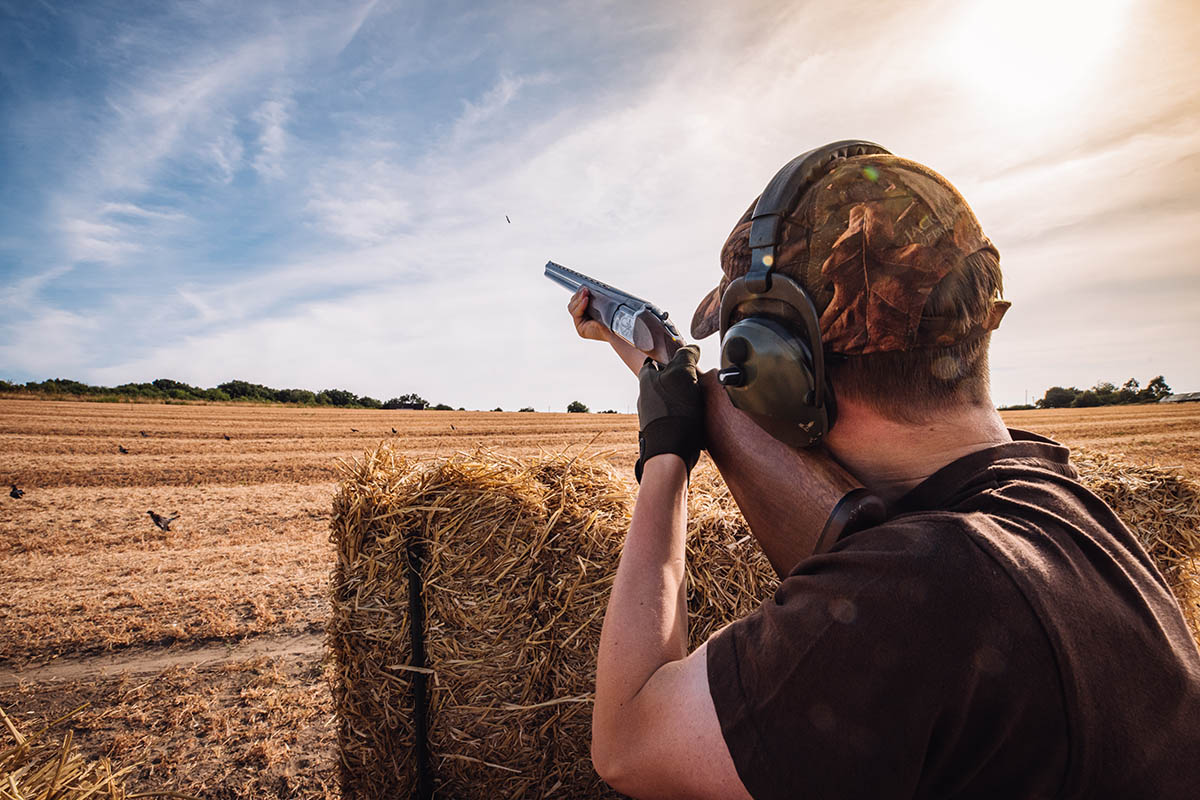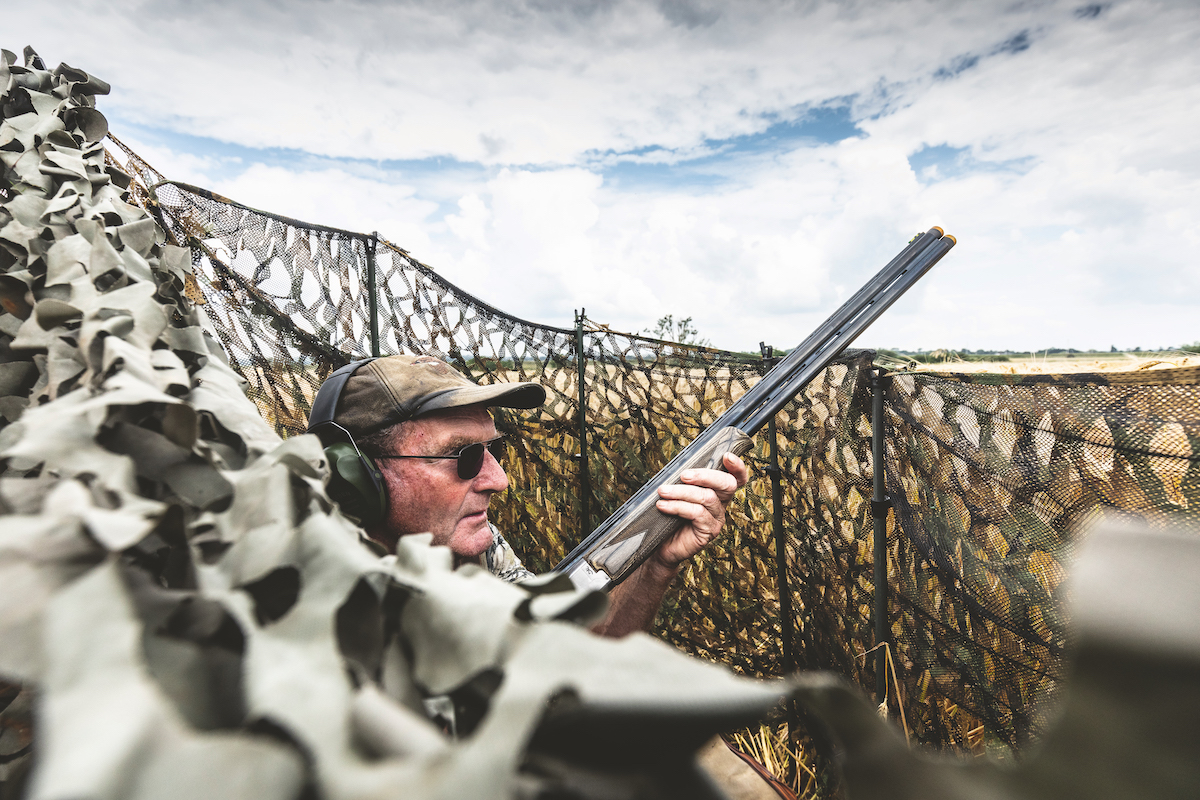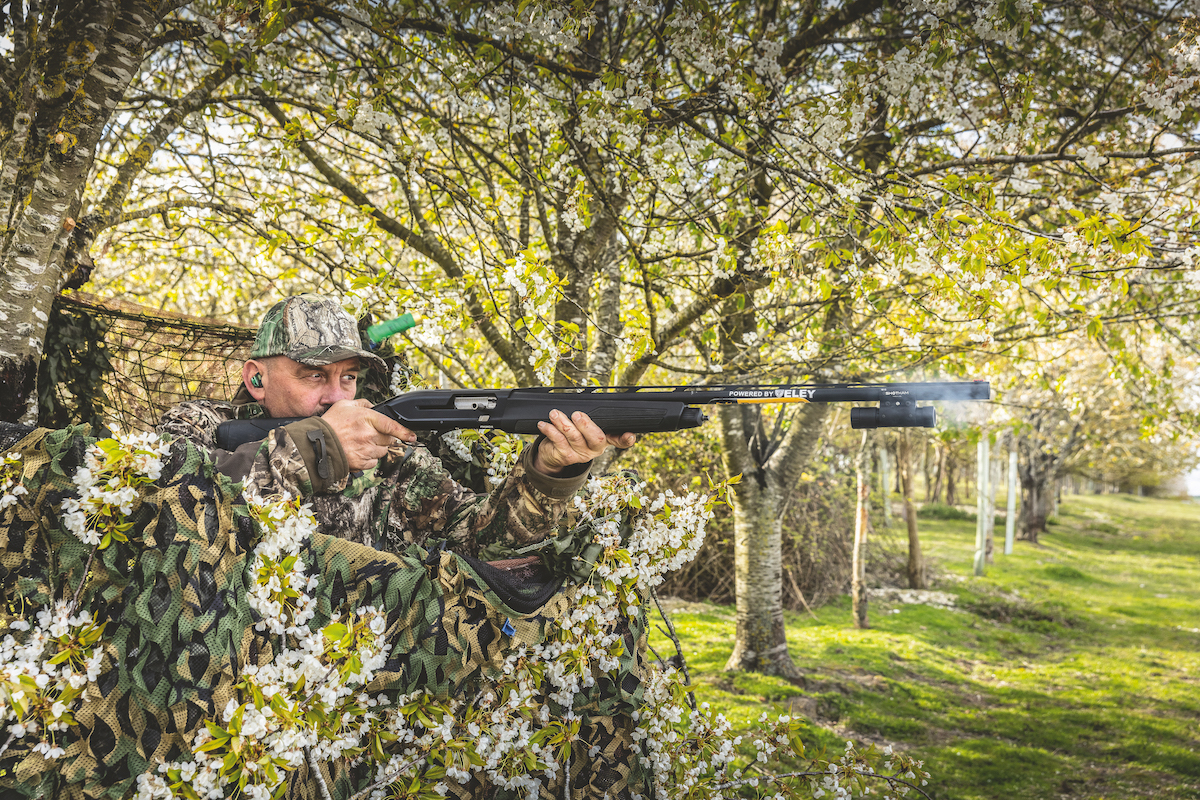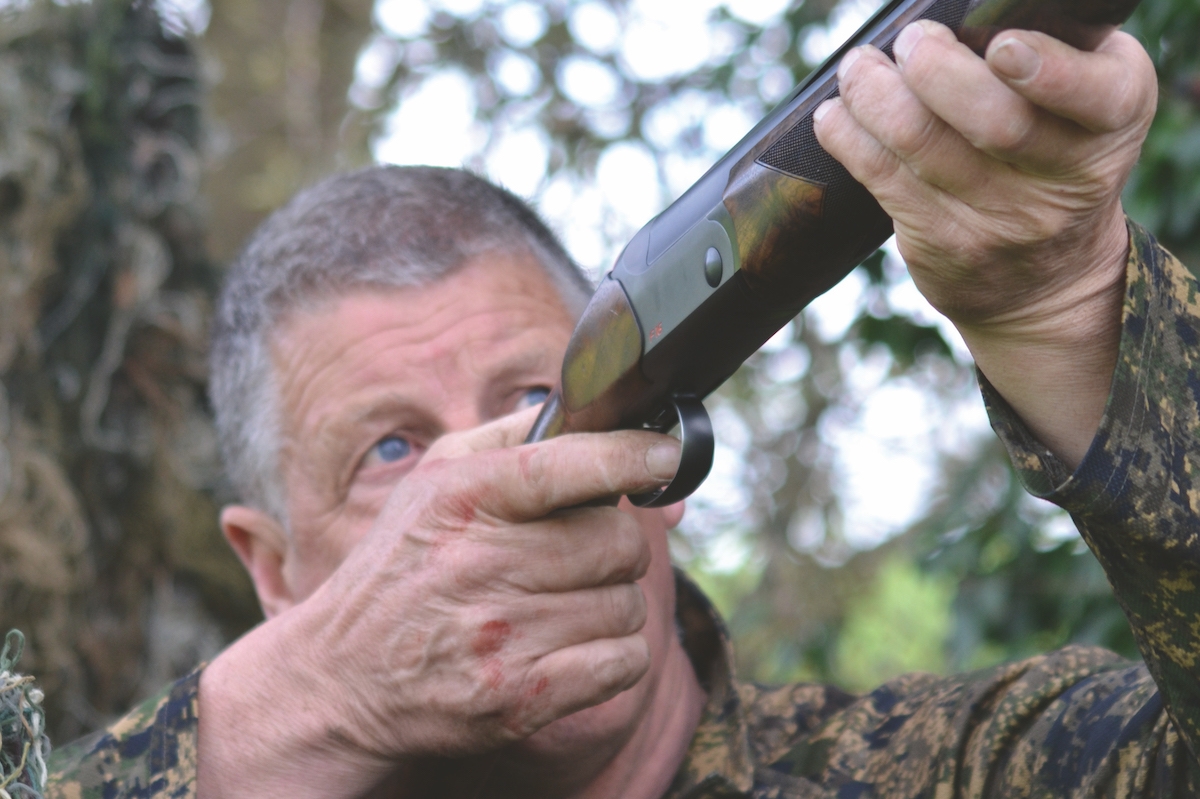How to use a straw bale hide for pigeon shooting
Inspired by the legendary Major Archie Coats, shooting pigeons from a straw-bale hide makes for an exciting and challenging afternoon of crop protection

Last week I opted for old-school shooting. A bale hide on stubble took me back to the days when diesel was 50p a litre and I was a dozy student who spent as much time asleep or shooting as I did studying. A bale hide then was a great place for sport and for late-summer snoozes.
The farm’s peas have been harvested in two parts. We have a large trial plot that is still uncut. The rest have gone off at a disappointing 1.2 tons per acre. Why so low? Well, it’s not pigeon damage. I’ve shot nearly 100 of them since drilling and scary men and bangers have added to the protection.
From the vantage point of the combine, it became clear that rabbits — the common coney — have taken rather a liking to them. Around the headlands in particular, yields were poor and the rabbits were fat. I was always told that rabbits aren’t partial to peas. Don’t believe it.
The woodies are still keen on the trial patch now that the majority of the crop is safely sold — and I was keen to keep them off. The problem is that the trial patch is right in the middle of the field. How to shoot birds in the middle of a field? I’d just taken delivery of my poults and in each release pen I’ve improvised shelters with corrugated iron and straw bales of the old-fashioned small variety.

Scout is well camouflaged against the bales and scorched earth

The bale hide may be in the middle of the field, but it is surprisingly inconspicuous
I had 15 bales left over — perfect for a hide. My eldest son, William, has nothing better to do now that GCSEs are over. He is part man, part mattress, like his father at that age, and I finally levered him out of his pit at noon. Together we set to wondering what it was about bale hides that allowed the late, great Major Archie Coats to shoot 550 birds from one in a day.
“I am mad about bale hides,” writes Major Coats in Pigeon Shooting (1963). “The bale hide is in a special class of its own.” Not unreasonably, William enquired: “Won’t the birds be scared off if a pile of bales suddenly appears in the field?”
Coats had the answer — at least for 1960s pigeons: “Let me say straight away that it is an old wives’ tale that you have to put out a bale, or indeed any, hide for some days in advance to get pigeons used to it. I have frequently driven the tractor myself, dumped the bales, taken the tractor back, built the hide and shot 200.”
We were excited and hoped for the same, especially when we read that bale hides can actually be a lure for woodpigeons. John Humphreys — a Shooting Times legend — has photos in his book, Modern Pigeon Shooting.

The restricted field of view from the bale hide makes shooting a challenge

Simon Garnham draws on the knowledge of shooting legends as he builds a hide out of spare bales
Enticing picture
We followed his instructions, leaving peepholes for the dog and an entrance for ourselves, with a spare bale to sit on. We discussed padding out the gaps with a camouflage net, but decided that if Humphreys and Coats didn’t use one, why should we?
A loose horseshoe pattern of rockers and a magnet with plenty of straw around it to reduce shine completed what we hoped would prove an enticing picture. A steady breeze was on my right cheek.
I left Will all set up with his 20-bore and was on my way back to the truck when his first shots rang out from behind me. A pair of woodies had approached high and from the rear, and he’d managed to connect with one while we were both still in the open. The stricken bird planed down, wobbled on a distant wire then collapsed into a hedge line. After I’d realised it was a safe and successful shot, I calmed down.
“Get back,” cocky son called out, blowing the smoke off his barrels as though I were some obedient retriever and he a blackpowder hero of the American West. I had a good mind to tell him to get it himself, but I knew a four-year-old labrador that would prefer the job.
My return along with the bird and Scout rather cramped his style. A 15-bale hide is not capacious and, given that we’re both taller than Major Coats, we’d opted for upright bales that give extra height but less stability. A couple of collapses followed and reinforcement work was needed.
Birds were approaching from the woods in the east, south over the horizon and down the hill, and west from some wheat fields. A pair approached above the decoys. Keeping low, we squinted through our peepholes while the bales rocked alarmingly. “Yep, still coming,” Will whispered as they disappeared from my view and I clung to our walls. “Now I’ve lost them, too.”
The problem with bale hides is paradoxical; they are wobbly at times and yet too solid at others. They have something of the feel of a castle about them. From the right angle, there’s no way marauders can see you. But from others, you can’t see them either, leaving the moment to leap up rather to chance. “Let’s risk it,” I whispered, straining the quads to rise smoothly and quickly.
On this occasion, our timing was good. One of the pair had curled to Will’s side. The other was breaking to mine. We were able to account for both. The next time, as a group appeared on my side of the hide, we got it wrong in our haste.

Classic shooting books by Archie Coats and John Humphreys offer helpful pointers on bale hides
I talked the birds in until the point when I lost sight of them. “Now!” I guessed and we both appeared over the top, only to find that they were circling at 45 yards before their final approach and were able to beat a hasty retreat. “Not as easy as Archie Coats suggests,” William noted.
However, woodies were approaching and coming at regular intervals of three to five minutes. A quick investigation of their crops confirmed that, yes, they were still rather partial to peas.
The restricted field of view actually made shooting fun and especially challenging. Occasionally, we’d find birds right overhead without even having spotted their approach. Then it was a case of who was fastest on the trigger. In his book, Archie Coats tells a story of the time that a pigeon even perched on top of a bale and he was able to catch it by hand. Ours were not so careless.
As we approached double figures, we sent Scout for a pick-up. She likes to be able to see progress and we found that allowing her a place in the doorway calmed her down and didn’t seem to affect the confidence of approaching pigeons. Her coat matched the parched earth and she was able to gallop out and back in
time to prevent our precious quarry from being flyblown on another scorching afternoon.
Will connected with a high crosser, sending it tumbling to earth in a puff of dust and then peeled out another from a group of four that similarly thumped into the deck.
From a nearby track, a vehicle disgorged four heavily laden occupants. I was suspicious and left the hide and my gun with Will while I investigated. It was a film crew just as surprised to see me as I was to see them. “Oh yes,” they assured me. “We have all the necessary permissions to be filming here.” I was able to assure them that they didn’t have the landowner’s permission.
Apologetic
Were they sabs intent on undermining our sport? Thieves reconnoitring outlying farms? Voyeurs and peeping Toms? Rather less excitingly, they were filming for a television series. “Oh! We had no idea this is private land. Did we miss a sign?”
Well, in fact, yes — they’d missed two. But they were apologetic and perhaps I can look forward to seeing myself in a cutaway shot for whichever show they were filming. I suspect I won’t. Who wants to see a man in shorts and knock-off New Zealand army desert camouflage spoiling the scenery?

With numbers approaching double figures, Scout is sent out for a pick-up
The sun’s rays now penetrated the corners of our hide and we had to be careful with movement. That half-standing, half-sitting position so beloved of pigeon shooters, the sort of half squat, was beginning to tell on my quads. Jackdaws wheeled over the woodlands to the east and swallows curled across us.
A grey partridge and her brood crept along the game cover and we halted shooting to enjoy the family picture. A buzzard wheeled and shrieked, sending them back into hiding. Things were slowing down, so we completed our count. A dozen, exactly the national average. A little under three hours well spent.
The hide remains, surprisingly inconspicuous. A good place for a quiet afternoon’s nap or some exciting crop protection — or maybe even both.








